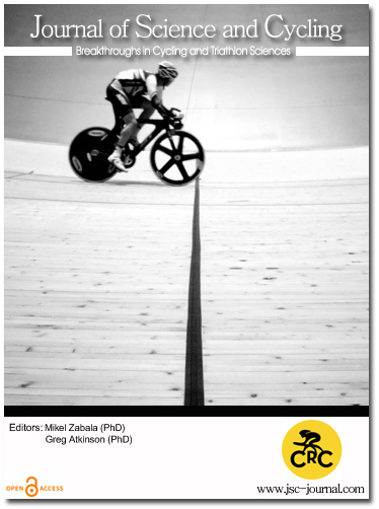Knowing your slope on the track: Getting the most out of GPS and power data
Abstract
Introduction
When cycling on hilly tracks, gravitational forces have a major influence on the cycling performance. For uphill tracks overcoming altitude differences can consume over 90% of the rider’s total power output [1]. Therefore, a good estimate of the slope is essential for simulating, predicting and optimizing the rider’s power output on a hilly course. In this work different methods to estimate slope profiles from recorded altitude, speed and power data were applied. The resulting slope profiles are compared with reference values gathered by differential GPS to quantify the error on the corresponding modelled power output.
Methods
Three rides were performed on a 5.3 km long course in good weather conditions. Altitude, speed and power data were recorded with a Garmin Edge 1000 and an SRM power meter. To account for drifts due to the barometric sensor, the altitude was corrected with radar based elevation map data provided by http://www.gpsies.com (SRTM1 dataset). Additionally, highly precise differential GPS data recorded by a Leica GPS900 was available on most parts of the course (accuracy < 5 cm). The first three methods rely only on the altitude measurements: smoothing with a Gaussian filter and applying the differential quotient (GAU), smoothing with a Savitzky-Golay filter (SGO) and using the Tikhonov regularization method [2] (TIK). The forth method incorporated only smoothed speed and power measurements, by calculating the slope with the P-v model [3] (MOD). Additionally, the Tikhonov regularization approach was extended to include altitude as well as speed and power measurements (TIM). For each method and ride, the best parameter set was determined individually.
Results and Discussion
Since we want to quantify the impact of errors in the slope estimation on the rider’s power output, instead of presenting the error of the slope directly, we prefer the corresponding error in power needed to overcome altitude levels: The change of potential energy Ppot can be described as Ppot=mgsv, where m is the mass of rider and bike, g is the gravitational acceleration, s the slope of the course and v the speed [3]. The speed was comparable on all three rides with mean values of 18.6 ± 0.4 km/h.
Figure 1 gives an overview of the root mean square errors (RMSE) and the mean errors (ME) of the different slope estimation methods compared to the reference slope, which was determined by slightly smoothing the differential GPS altitude and calculating the difference quotient. For the altitude based methods GAU, SGO and TIK the altitude correction eliminates the ME of around 5 W while the RMSE is not changed. This confirms the usefulness of the altitude correction to globally removing the drift while locally preserving the quality of the barometric data.
The model based method MOD reduces the RMSE from over 40 W (GAU and SGO) to less than 30 W. It should be noted that this method is highly sensitive to external factors like wind or braking. TIM avoids those problems by additionally considering altitude measurements. This leads to a comparable RMSE as MOD but less variance between the three recordings. It can be observed, that the ME is not zero if we take model estimations into account. This indicates, that small errors in the model introduce a drift over time. Therefore, for future applications, a correction algorithm should be developed.
Conclusions
By representing the error in terms of the power output, a direct measure of the error that is introduced to the P-v model for simulation and prediction purposes is provided. With the altitude correction, the mean error diminishes, which avoids that the impact of modelling errors adds up over time. Moreover, the local modelling error can be reduced, by considering speed and power data in addition to the recorded errorDownloads
Published
How to Cite
Issue
Section
Copyright (c) 2018 Journal of Science and Cycling

This work is licensed under a Creative Commons Attribution-NonCommercial 4.0 International License.
Authors contributing to Journal of Science and Cycling agree to publish their articles under a Creative Commons CC BY-NC-ND license, allowing third parties to copy and redistribute the material in any medium or format, and to remix, transform, and build upon the material, for any purpose, even commercially, under the condition that appropriate credit is given, that a link to the license is provided, and that you indicate if changes were made. You may do so in any reasonable manner, but not in any way that suggests the licensor endorses you or your use.
Authors retain copyright of their work, with first publication rights granted to Cycling Research Center.






